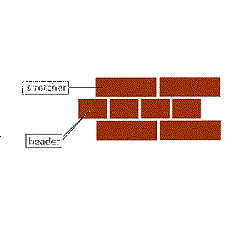The Blog
Stretcher = brick in lengthwise
Header = brick in widthwise
Fig.1 shows what the stretcher and header of the brick are:
Stretcher bond: also known as running bond consists of a pattern of bricks laid with only their their stretchers showing. It is a simple repeating pattern design but has the limitation of not being able to make bonds with other bricks perpendicular to it (i.e. you can’t form a corner by joining two of these stretcher bond brick walls together since the design doesn’t incorporate a header into the pattern). For this reason, it is suitable only for making stand alone thin brick walls with some additional reinforcement. It is common so see stretcher bond brick walls in modern buildings forming the outer face of a cavity wall or as the exterior shell for structures built using timber or steel-frames.
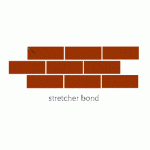
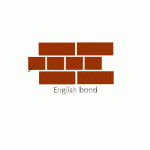
Fig.4: Flemish bond
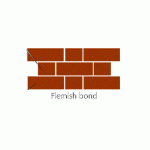
A common variation often found in early 18th-century buildings is Glazed-headed Flemish Bond in which the exposed headers are burned until they vitrify (form a glass like substance) with a black glassy surface.
Other variants are Monk bond and Wessex Bond (the Wessex bond has a brick pattern consisting of three stretchers between each header). This type of bond is much more easier to lay down than when making a full Flemish Bond brick wall.
Monk bond is a variant of Flemish bond with a pattern consisting of two stretchers followed by a headers followed by two strecthcers and so on in each row with the headers placed at the position in between two stretchers in the row below.
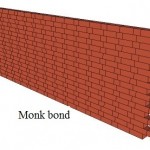
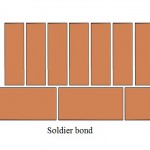
About the author
Our services
Popular Posts
- Steel Beams Used In The Construction Of Property
March 26, 2012 - Plumbing and PEX Piping
April 4, 2012 - Tips For Planning To Build A New Kitchen
March 26, 2012
- Steel Beams Used In The Construction Of Property
Contact us
Suite M6
5 Blackhorse lane
London
E17 6DSEmail: info@tgbuilders.co.uk
Tel: 020 8531 6361Quick contact

